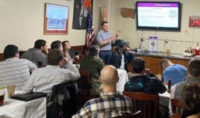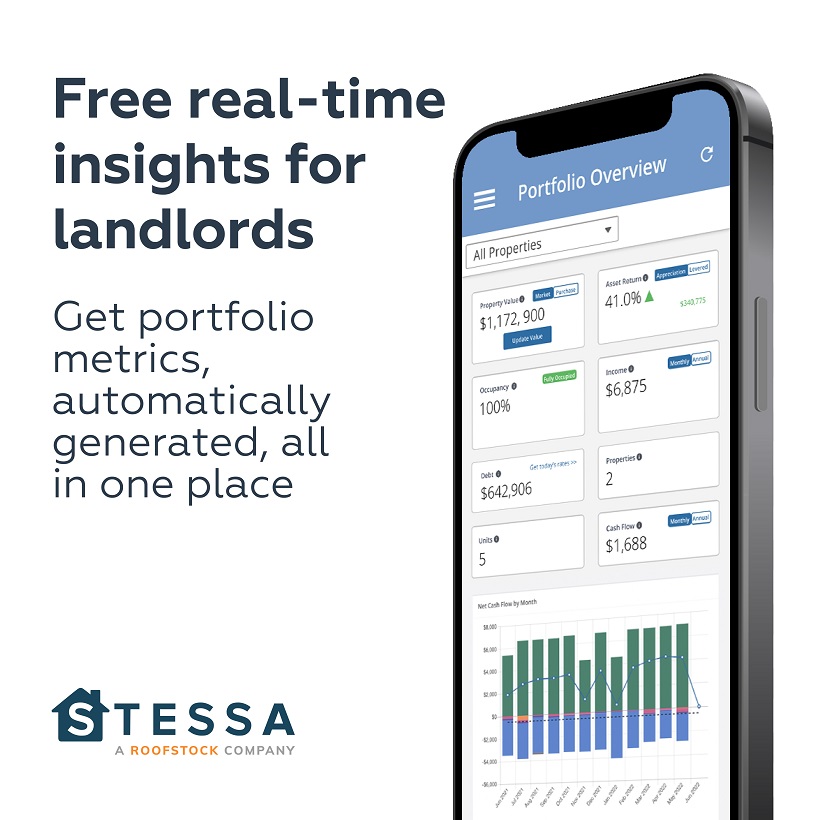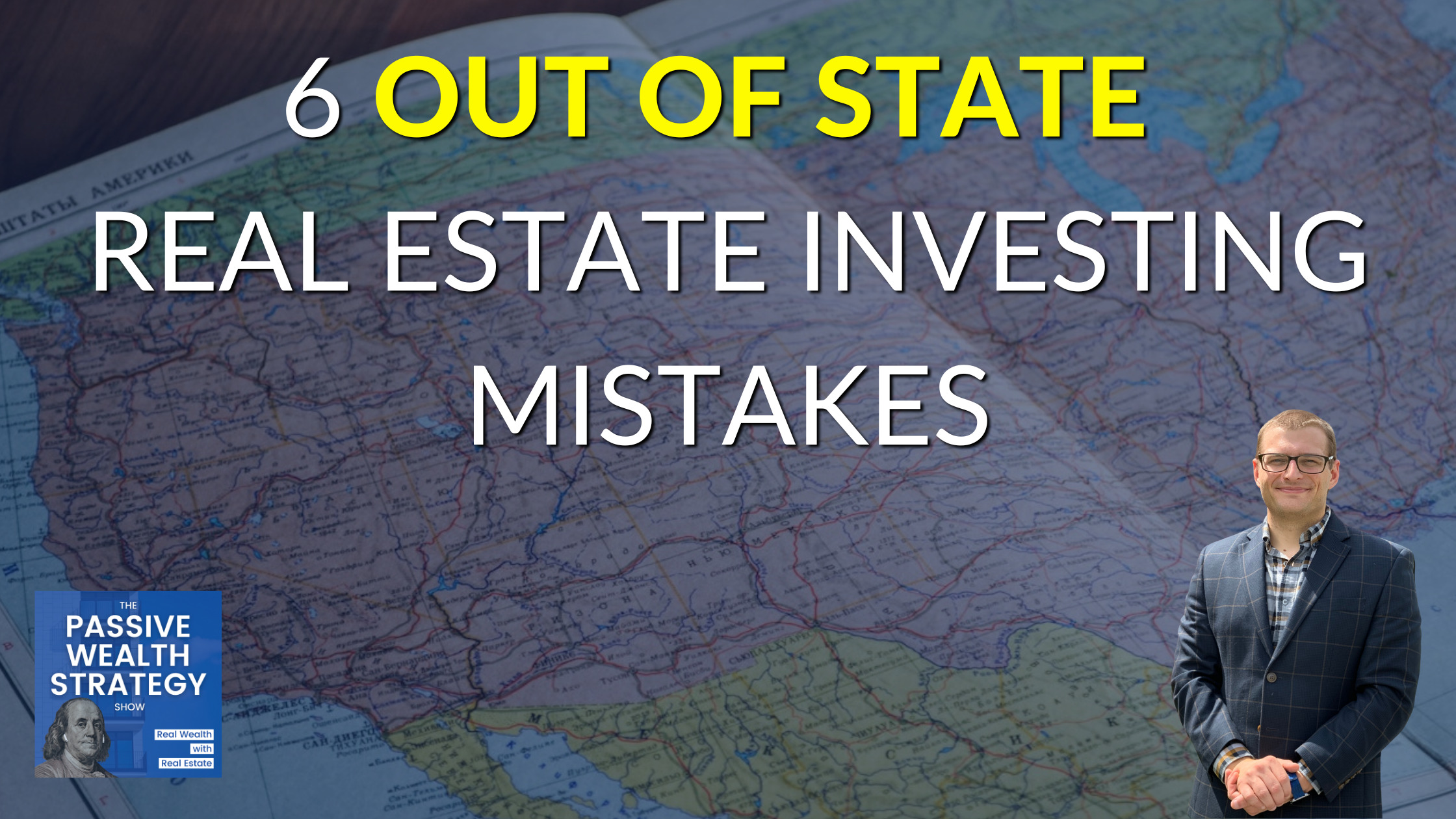Do Well While Doing Good, an Update on Residential Assisted Living with Doug Fullaway
Doug. Thank you for joining us today.
Thank you.
I’m really excited to talk with you. We’ve been talking a little bit before we hit record and you have some very powerful things going on doing well while doing good. And I’m looking forward to bringing this message to our listeners today. For those out there who don’t know about you and your business, can you tell us about yourself and what you invest in?
And then we’ll get right off.
Absolutely. So the name of my company is 14 plus kind of a funny name, but the question is why the name if you look at all the kinds of real estate, you can invest in the type of investment of senior living has outperformed over the long period, every other kind of reason.
For the longest period of time, the national council of real estate investment fiduciaries increase long game collected data on all, industrial and retail and student and multifamily and commercial and all that. And senior housing. And, over a period of many years, the segment that had the best return was senior living at an average of 14%.
Unlevered return. And it’s always been two to 3% better than multifamily, but it’s not well understood because it’s significantly smaller. And because it has a large operating component to it, people don’t necessarily want to invest in it. Hadn’t for quite some time. Now in the last few years, industrialists have come up to almost the same level and indeed senior housing.
Senior living has dropped a little bit. It’s no longer 14 is now down around 11, but nevertheless, the 14 pluses, if you want to do better than average and investing in senior living, I hope I can help you. So that kind of gives you a snapshot of what my company does is it really helps. And I was the CEO of a software company.
That sold operational software to thousands of assisted living communities. We started in 2002 and I left that business in 2016. So I have been to hundreds and hundreds of these sites. I know, lots of operators and I know most of the senior executives in the industry. So I sit in the middle, I help operators who are trying to raise money for the first time.
I help operators because they want an operational audit to fix that. I help operators. I’ve known for many years because they need to raise money and no longer will their friends and family provide enough because they’re growing so fast. I remember starting with when one operator had three sons, And over the course of the next four years, I helped them grow to 84.
And then I found out I was trying to sell to a customer who had already had 250 sites. And he said no, I need to find a CEO. So I introduced them and they bought the other company. And all of a sudden I had a customer, they had over 400 sites. So I’ve seen things come and go, and I’ve seen people go through the life cycle.
So I help on the operator side and help them find their money. And on the investor side, So that’s the value I try and add is do a great job of underwriting and it makes sure that if they’re going to invest, it’s a great operator, because if that happens, your odds go up 10, that you’re going to do well.
And this is not something that, your friendly financial planners are likely to talk to you about. This is one of those that takes some work, but there’s some, because of it, there’s some pretty nice return. I always take investments to people. When I can see a cash-on-cash return, I want to see at least 9%.
I’d like to see 10 or 11. I’d like to see that 10 or 11 growing to 16 or 17. Very often I have one that I’m doing right now that has a 24% average cash on cash yield over 10 years. With those kinds of returns, it pays to spend the time to learn. So from the investor side, my job is to help educate.
And on the operator side, my job is to make sure that they prepare the right information. So the investor can make an intelligent decision. So I sit in the middle.
Nice. And this is something I haven’t actually thought about before is actually underwriting assisted living facilities and understanding how the cash flow works.
I’m a multifamily and self storage guy and. And we have operations, but we’re, we don’t have staff there 24 7 really watching over the people, helping them, live their lives.
But for the assisted living facility, how do you even get that started? And, yeah.
Do you actually it’s different, but You start with all the things you know about multifamily, is this a good location from a point of view of, is there enough population?
Are the supply and demand in or out of balance? Is this building that I’m about to take on? How does it compete in that market? So you do all the things you’re used to doing, and now we add the things that are typical multifamily property with a hundred units. We’ll have what? Three or four employees, something like that.
Yeah. A typical assisted living community will have 55 to 60 employees for those a hundred residents. Wow. So the number one thing you have to get right is do they know how much labor they need and what’s, that’s going to cost them. It’s a very difficult question at some level, but at another level, like anything else you can find benchmarks.
On, on my website, there’s a book about investing in senior living. It’s free, you can download it. And so I explain all of these things that are different. And then there are examples of cost structures, and I always publish the most recent set of previous year numbers of if you have an assisted living and it’s this size and it offers memory.
Then this is what your median revenue should be, and here’s what your costs structure should look like. So yeah, people who invest in multifamily already have all the skills they need, they just need to learn a couple more dimensions of things to ask them. And, if you ask the operator the question if they can’t explain it in plain English run, because it’s not that difficult and the good ones can explain it very quickly and you’ll get very smart, very quick and understanding it.
So it is in some ways the same, and in some ways, a little different, cap rates, we don’t see 5% cap rates in senior living very much. The media. It is around seven and a half percent. Now, if for a long time it was 8%, it’s been steadily coming down and even with COVID, it continues to stay down, which is an interesting thing, to know about.
You would think, oh, get worse. Maybe not, maybe what’s going on. I must have fallen apart because of it.
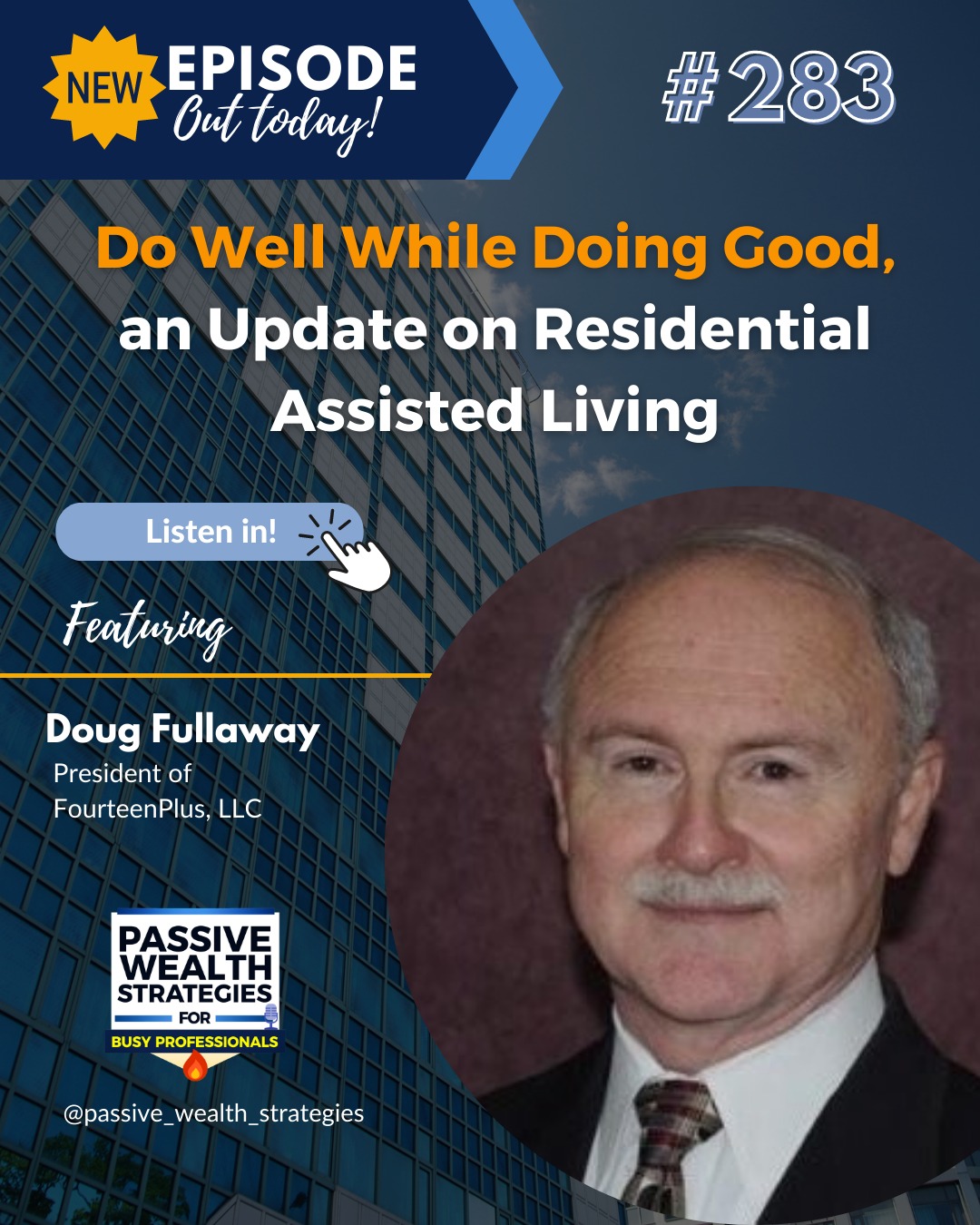
Do Well While Doing Good, an Update on Residential Assisted Living with Doug Fullaway
It hasn’t, that is one of the big things, especially, I haven’t talked with him. Residential assisted living expert in the COVID period, even though it’s been a while, I just haven’t talked with anybody.
One of the things you, at least I heard or read about residential assisted living as a result of COVID is that there was basically an Exodus of residents as their families pulled them out due to panic, and what have you. And that was very hard on the residential assisted living business and the operators, the investors, things like that.
How have you seen a financial impact as a result of COVID and has it come back?
So let’s back up because one of the problems that I see in this whole senior housing space is there’s lots of misinformation. What on the wall street journal or you’re seeing the popular press has never matched what’s happened.
There was this notion that there was a big Exodus of people moved out. That’s actually not true. It declined the occupancy, the census did decline, but it declined because when COVID hit, you lock the doors because the state government said you had to lock the doors. No visitors, no new people to come in for a tour, no new people to move in.
Let’s a couple that with the fact that the average length of stay is two years. What that means is if you were to be shut down for six months, your census is going to go down by 25%, no matter what. Okay. Okay. So there was not an Exodus. There was just, you didn’t fill the beds anymore. As people passed away, you didn’t fill the beds because you couldn’t let people come in for a tour.
And the people that were there were isolated. As I believe in retrospect completely inappropriately, but we didn’t know that when we started, none of us were that smart. So the census average was 88, 80 9% in the industry. And that dropped to 70%. Guess what lots of these businesses break even at about 65, 70%.
So if you were performing poorly, when it. You got a problem. And because of it, there are a lot of them in the stress at the moment, I would say there might be 40% of the industry that’s in that difficult position. It’s huge. And so you think, oh, I can buy it at fire-sale prices. That’s another misconception, the buyer and the seller who are serious, who’ve been around a long time.
Not the casual buyer who shows up has never done this before, but somebody who’s been in this for 10 years and it’s going to keep being in it because they understand the demographics. They see this big demographic wave hitting and they realize that two years from now that building is going to be gold.
Compared to what it is now if you go in and fix its performance. So you have to be really careful with your perception here that, oh, it’s a buyer’s market and do whatever you want. No, you can’t because the really good operators, they’re getting extensions on their loans. They’re having more equity injected, they’re recapitalizing and yes, there are some wonderful opportunities.
I’m working with one operator now who has purchased what used to be a hospital built in the 1940s, tearing it back to the wall, tearing everything out, redoing the inside. And the all-in cost is going to be $150,000 a unit when they’re all. As compared to new construction, which is more like $250,000 cost.
So you get this brand new, beautiful product that’s going to come to market about 12 months from now. And by then I think the psychology around COVID will have changed too, oh, we have the flu and we have COVID we’ll come back and talk about that more, because I think it’s important to understand, the beauty of that is if you look at her practice, If you’re an investor and you’re willing to wait eight to 10 months to get your first dividends, she’s going to pay a 20% cash on cash return, bang, and you go well, does the, we go back to the basics in that local market?
What’s the supply and demand? Even with COVID the only two competitive buildings, one’s at 96% and the other were at 92%, and what’s missing is our memory care. So she’s going to have more memory care beds. And how many unmet beds are needed about 80. And she’s going to build 50. So you that’s one of the things about investing in multifamily or in senior housing, senior living.
It’s the micro-market that counts. What’s my product. What are the prices? What’s the experience? Can I do something else? I’m going to back up in time. There was an operator I knew who was going to put up a new building in Houston, Texas, and every lender in the country would have wrinkled her nose and said, oh no, you can’t do that.
There’s too much supply. It’s a mess. And I thought, why are you doing this? He opened the building and had it cash flow positive in 90 days. How did he do that? He understood the three-mile in the five-mile circuit for the market. He understood. His customer. And he understood that nobody was offering the mix of products and services that they really wanted.
That let me say it a little different way. He was in a very expensive neighborhood, a residential neighborhood, and the people there had a lot of money and they wanted to stay close to their friends. They wanted to still be able to go to the golf course. They just didn’t want to clean the gutters anymore.
They didn’t want to cook anymore, or maybe the spouse passed on and life was a little lonely. And so he offered an extremely high-end product and nobody else within 10 miles at anything like it, even though it was Houston and quote had too much supply. So you gotta be real careful about generalities in this and get down to the specifics of each case.
So COVID at first caused the census to go down for many months. And as the doors started to open, or if you were in Florida and they didn’t lock you down the same way. They never had the problem. It’s so interesting. They let people go visit. They said you got to wear a mask. And for a long, for a period of about a month, they were shut down.
And you for a period of about a month and a half after that, you could emit new residents unless you put them in 14 days of quarantine to make sure they were safe, but families could visit so long as they’ve been tested, but they didn’t close them down. Where I live here in Oregon, it was completely the opposite of that.
If there were too many cases in the case, Your building was shut down. It didn’t matter if you were doing a perfect job in your building, it didn’t matter. You couldn’t let anybody in. So census dropped everywhere and businesses got in trouble. It was so frustrating. I sit on the board of directors for two skilled nursing communities here.
And I asked the nurse to bring to a board meeting a graph that looked back three years and I wanted two lines on the graph. I wanted the number of people who died. And I wanted the number of people who were admitted per month. And I said, just put it up for us. And she did eight people died. Now there are 150 people.
And these are all people who are veterans who have very serious medical issues. And the average age of death was 92. It isn’t like something horrible was going on in these buildings. They needed help. They were getting the best help they could, but eight with die, and we would miss. And if you put the graph up, you couldn’t tell COVID existed until you see the state shutdown where the death rate stayed the same, but the admission rate dropped to zero.
And I put that up when the state official was there. And I said I am really confused. This means we’re now five months into this. That means there are 50 veterans who need our help and we can’t give them. When are you going to let us let these people back in the door the next week they said we could let people in the door.
So I think we as a public kind of overreacted and I don’t blame the politicians here in Oregon, because they looked at the veterans home in Maine where 50 people died in Oregon. 19 people died out of 300 and once we knew what was going on, We isolated. And even though we had new cases, we never had a death after that.
And we went for nine and a half months without one new case. How do you do that? What I’m seeing as the industry has learned how to do a great job of preventing COVID from coming in the door, it’s safer than being at home. There’s no question in my mind about that. And I think what we’re going to see.
Everybody’s hope is you get the vaccine and you’re safe for life. That’s not true. All you gotta do is look at Israel. They had the best COVID program in the world. Most people in the fastest. And they’re now having new cases at a rate that the United States would be considered a hundred thousand a day.
Let me say it again. Israel is getting. Like the Delta version of COVID, even though all these people are inoculated and it’s it’s hit again, and now what they’re not telling you is the rest of the story is if there are a hundred thousand people who get COVID in the United States, how many will die?
I bet you and most of your listeners don’t know the answer is to two out of a hundred thousand who get COVID will die. For seniors who got the flu, it’s more like nine. So we’ve not emotionally adjusted to the facts of what’s really happening. I think a year from now when the politics settled down and we all get smarter, we get more people inoculated, more herd immunity.
We’re going to come to see COVID like a variant of the flu old people die from the flu old people will die from COVID. But interestingly, a consumer survey was done in June and July, just finished of families and residents in different kinds of senior living. Why do people move there? You don’t wake up in the morning and say, gee, honey, let’s go shopping for an assisted living community.
That’s not what happens. What happens is the daughter standing in the hospital on Thursday and the doctor said your mom came. She broke her hip. She’s not eating well. She’s not taking your medications. She’s by herself. This is not good. Here’s a list of places you ought to go look at. And so people go look because they need it.
Not because they love it. 95% of seniors will tell you they don’t want to move there, but 11% will move there if they’re over 75. So 11% of the population will move there. So it’s important. To understand what’s going on. I think we see that life goes back to normal 12 months from now that is people will still want to move in.
People go look because they need it, not because they love it. 95% of seniors will tell you they don't want to move there, but 11% will move there if they're over 75. So it's important to understand what's going on. I think we see that life goes back to normal 12 months from now that is people will still want to move in.
- Doug Fullaway Tweet
And that’s what the survey showed is people really realize more than ever. That being alone is not a good idea. It’s if you’re by yourself, it’s one thing. It’s a completely different manner. If you’re 82 and you’re by yourself, it’s not good. You have no companionship nobody to talk to. You don’t eat well.
You don’t take your meds. It’s just not a good situation. But if you move into a well-run senior living community, even if COVID is an outbreak is big at the moment, they’ll bring food to you. Somebody will come in to make sure you get your meds. Somebody will sit down and chat with you. So the value of senior living has remained constant throughout this actually, which is not something I would have guessed, but the survey was done over 250 senior living communities is a spread across the country.
So it’s a Ph.D. from old miss who did it with her company. It’s really well done. And to me it says, Don’t be afraid of COVID in the long-term in the short term, be careful about the tactical situation, but don’t make it something that causes you not to invest because you need to remember that people over 75, that population over the next 10 years is going to increase it by about 11 million people.
That’s a lot of seniors. And they don’t want to stay home after they get to be 75 or 76. It’s just too hard. And the problem is what can they afford? So there needs to be a range of products. Those are all appearing. And yes, 11 million aren’t going to move in, but certainly over a million people more are going to move into senior housing and we didn’t have that much excess capacity.
Actually, that’s interesting to think about that. Then locking down and shutting down the facilities. I’m certainly no skeptic as to, the risks of the virus, especially early on. And we have no idea how dangerous it was going to be the statistics, now we have vaccines available.
There’s an excess of vaccines in the United States, so on and so forth, but it’s almost saying when you say. Assisted living facilities cannot admit new people. It’s almost like saying hospitals can’t admit new people because people move into residential assisted living because they need it.
I think you’re exactly right Taylor. They need to move in. They need to go somewhere. And the other thing that’s happened. The value of the vaccine is well-recognized by the residents. The number that is vaccinated in these buildings tends to be 95% or 97%.
And the only people who don’t get it, or because the doctor says you shouldn’t get it, it might kill you. So the residents are almost. And the staff it’s very different because, you have a 23-year-old young lady, who’s worried about the long-term effect of the vaccine because she still wants to get pregnant.
And she’s very healthy and it’s low likely if she gets sick, it’s going to be consequential. So the vaccination rate amongst the employees is around 60%. So I, but I see the really well-run companies have learned to manage this very effectively. They say to people, look you need to stay away from crowds.
You, you need to know what the symptoms are. I was at a conference two weeks ago and I asked many other senior housing operators. If they were they seeing breakthrough cases? That is somebody who’s had the vaccine who actually gets COVID, everybody’s seeing it. But, Almost everybody’s asymptomatic.
They didn’t even know they have it, let alone be sick
And it’s not as bad.
They’re great. It’s and so they go here, you gotta be vaccinated. And if you’re vaccinated, even if you get it in your old, the chances are, it’s not gonna make any difference. You’re going to be just fine. It’s going to be like having a cold for three days.
So I think we, as a, as an. As a country, we’re going to get smarter. We’re going to get less than emotional about things. I actually believe we’re going to realize that masks in crowded situations make sense in another situation they may make sense at all. Interesting us Marine Corps did a study because they wouldn’t know that you put all these guys at Bootcamp in masks.
So they did what one platoon, cause they can issue orders. You will wear a mask. And if you don’t, it will be very painful. And they had another group, they didn’t put them in and they ran them all through Bootcamp and expose them both to somebody who had COVID you could, they couldn’t see any difference.
So they didn’t put anybody in masks. They knocked it off. They found it was a waste of time because think who their God, they got 17, 18 year old. Males and females were in very good physical condition. The chance of that getting COVID, even if they get it, it doesn’t have any effect. So they said it doesn’t make sense to put these people mask, after all, we’re going to make them run and breathe, heart
All living and breathing the same air in the same room all the time.
It really doesn’t matter. Now I go to a conference and there are people from all over, I don’t know, 300 a minute crowded room, and I don’t need the government to tell me I’m going to put a mask on, but I’m also going to be bent out of shape. If I go to have dinner with my wife and they’re telling us we have to wear a mask and there’s nobody within 10 feet of us we’re all vaccinated.
What are you talking about? So I don’t know. These are just my opinions. I think we’re going to see it get better. I think that the high level of heat and in terms of investment opportunity, We’re seeing going on in the senior housing business, much what you saw happen in the hotel business? There became different kinds of hotels, very inexpensive, a little more expensive middle of the road, Ritz Carlton, let me, there was a range of them at a range of prices.
10 years ago, there were lots of Ritz Carltons and senior living, and most people couldn’t afford it. And they were making a lot of. Then people came along and did more. So I was actually somebody who acquired one with five other people in a small town in central Oregon population of 17,000.
And indeed what we found was it was a great business. It was a place where you could go and take care of people and do a great job. But we also priced it for people who had no money and we staffed it properly and we negotiated with the state to get the Medicaid rate, to match the situation.
So that was a different product. Now, what if people are designing things from the ground up to be truly affordable, or maybe they’re building one that’s referred to as an active adult. It doesn’t have. All of the health care capabilities, because that’s not what people want. They just want a place that they can go and play cards with their friends and go out to play golf with their buddies and have interesting people come in and talk, and they don’t need anybody giving their meds because they’re fine, but they do not want to mow the lawn or clean the gutters, so there’s a product that’s like that. So you’re seeing this range of products and very creative things. W which means people who don’t know multifamily are beginning to realize that maybe they had to shift some of their assets over in this direction. There’s a lot of operators.
Nice. Now, one of the things you were hoping you can tell our listeners about real briefly before we hit record, you were telling me about a project that you’re working on right now in my home state of Virginia.
And I think that’s particularly important to discuss because a lot of times when we talk about residential assisted living, especially those of us like me who are not residential assisted living people. Only talk about old people and that’s not the only use case of assisted living. And you can tell us what you mean.
So I’m working on setting up a residential substance abuse treatment program. It’s well-established in the literature and in practical matters that people do well. If they go reside someplace for 30 days, get six and a half hours a day. Six days a week for a month of intense training, about how do you cope with the thing that caused you to become addicted to drugs?
What are the physical things that happen to you? What are the things you need to learn, how to manage so that you get out of this? Because the average person who has a drug problem goes to rehab seven times before they get better. If they ever get better, it’s horrible. People who go to a residential program, tend to go back, not at all or once.
So it’s very well-proven that if you offer what is essentially assisted living with some special training, that is somebody else’s the cooking, somebody else provides the programming. And in this case, it’s heavy on education. How do you learn to find out what caused you to become addicted? To try. And when you learn what those things are, you can then learn to will, how do you manage those things?
So there’s lots of counseling that goes on individually and in groups. And there are lots of training about techniques for relaxation, which is something I thought sounds kind of corny. Does that really work? And then I have watched a group and it was like, oh my gosh I talked to one lady who’d been in.
Really she’d been on heroin or some variant of opioid for about 12 years. And she tried all kinds of things. And she said, this program finally got me away so I can manage my way out of this. And she’d been clean for two years when I talked to her. So, I’m doing the same thing. It’s so interesting.
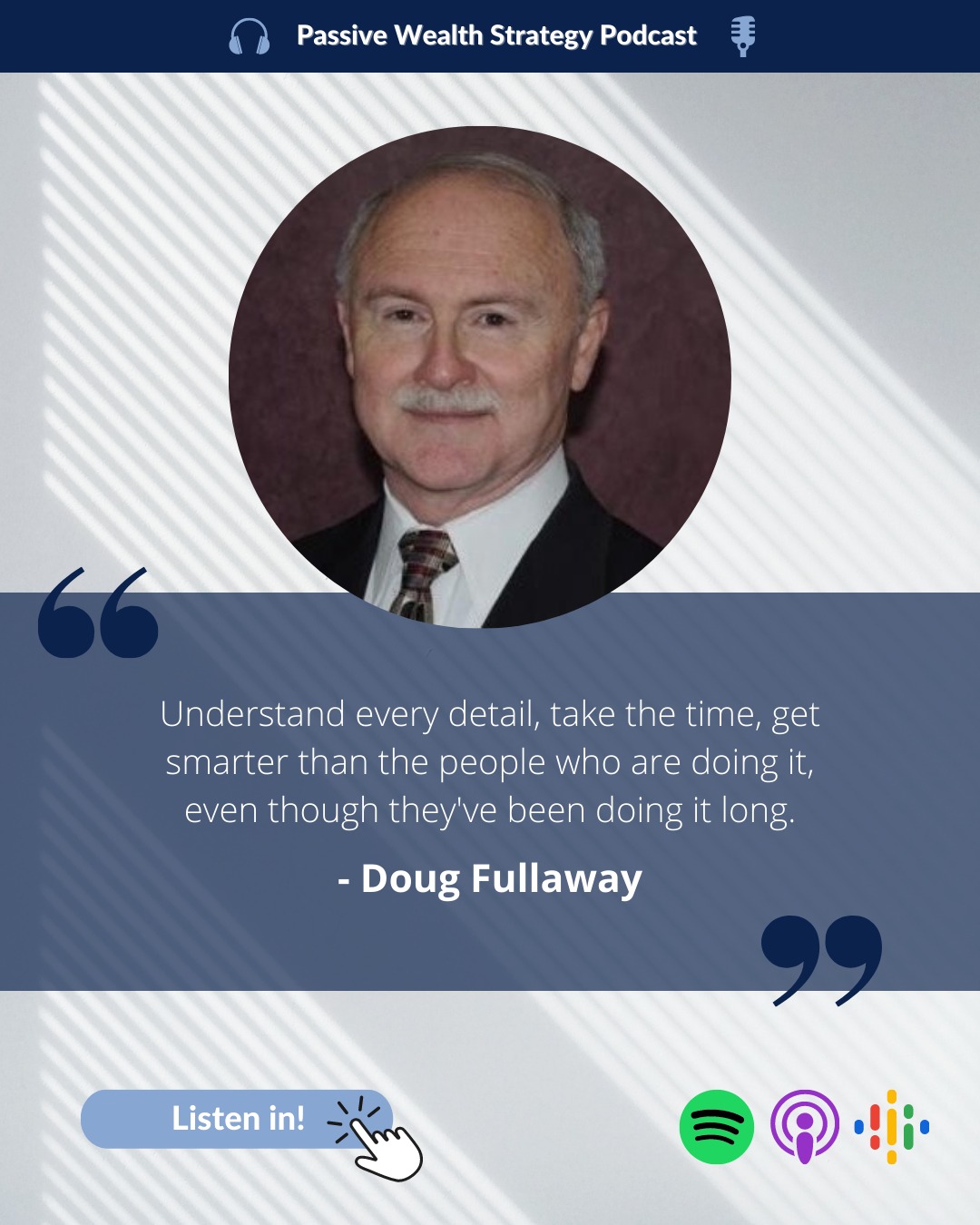
Understand every detail, take the time, get smarter than the people who are doing it, even though they've been doing it long.
- Doug Fullaway Tweet
You look at the financials and it looks almost like an assisted living community, and you got to buy a building and you have to maintain them. You got to do marketing to get the people in the door, you got to hire the staff and take care of them. And these are specialized, these are people that got special training, but by the way, it’s not like they have college degrees in psychology.
They don’t, there are a few who do, but most don’t. Our manager does and the early therapist does, but the rest of them are people who’ve gone to some kind of certification training over a couple of years and gotten good at it. So you have the same issue of where do I find staff and how do I take care of them and make sure that they’re okay.
And then how do I make sure the residents get what they need? You have to pass the meds to them because the doctors have them on prescriptions. Some of which is to get them off of the IOP. You have to feed them well because if you feed them well, they’re in good spirits. If you don’t feed them, then all they’re going to complain about is just assisted living.
And so I was amazed because to me, the rates that people charge 15 to $30,000 a month for somebody to get this treatment normal, and we’re going to take Medicaid, and the revenue is $319. And we can definitely produce a 20% cash on cash for our investors. So it was not hard for me to raise the equity I needed.
It was very difficult to borrow the money because people are afraid of this business. They think it’s very risky. There are 20 million people who need help and about 4 million get help. So this is a very underserved market and it’s interesting. The lenders who will lend say, oh, it looks just like assisted living did 15 years ago, inexperienced management.
Don’t really know how to control all of these. Huge unmet need, not that hard to get into, if you can get a license hard to get a license. I’m taking what I learned in assisted living and taking it, working with a Ph.D. psychologist to go create a similar kind of business. It’s very much the same, so
Nice. I certainly appreciate you doing that and not super far from where I am and we certainly have A lot of problems with opioids here in Virginia and really throughout the rest of the country. So it’s everywhere. It’s everywhere. Yeah. I appreciate that so much right now. We’re going to take a quick break for our sponsor.
All right, dog. I’ve got three questions. I ask every guest on the show. Are you ready? I’m ready. All right. Great. First one. What is the best investment you’ve ever made other than in your education?
So the best one I made is it’s going to sound weird, but it’s also the one I made them fake on. The best one I made was the first one where I stuck my neck out and signed my, signed guarantee on a loan.
It was that small building in Eastern, Oregon, and Madden. Nobody’s ever heard of Madras, which you might’ve heard for the baseball player. It came from there, Jacoby Ellsworth, who pitches for the New York Yankees. He’s our marketing program. He comes home in the summer and signed baseballs for little league teams.
Everybody knows our building because of it. It was a great one because I was forced to learn everything about loans and about marketing. And I thought I knew, but until you actually do. You don’t really know. And it’s been financially okay. For me. And I can’t say it’s been great, but it’s been financial.
Okay. So that was, I think the best one because it got me going
Nice. To continue with the baseball metaphor, even though I’m not a baseball guy, a base hit is still a good thing.
Yeah. It was a very good thing.
So we had the best investment. Now I go to the other side of that coin, the worst investment.
What is the worst investment you ever have?
So it’s going to sound weird, but it’s the worst one is the same one because I didn’t learn something before I did it. And I repeated the mistake on the next one. I was so excited about getting them done and she had done one. Let’s go do another one.
This next one didn’t turn out. It didn’t turn out well, because I did not understand that when you raise money from private investors, they all might have different objectives. So we got the building turned around, it was making lots of money. We’ve been running it for six years and somebody came along and said, I want to buy your property, your business for $11 million.
That sounded really good. Cause we’d put 4.3 in it does sound good and it sounded really good. And then I found out that the two biggest investors had no interest in selling at all because they loved the dividend they were getting and they didn’t know where they’re going to reinvest the money. So it didn’t sell.
So guess what? I didn’t make any money because I was going to make money on the carry. When it sold, haven’t made a nickel on it put in years of work, it was a bad move on my part. I learned a lesson, the hard way it was for me personally, a bad investment still makes lots of money. I just don’t make it
An interesting lesson to learn. My favorite question. My favorite question here at the end of the show is what is the most important lesson you’ve learned in business?
Don’t be afraid to roll up your sleeves and learn the details because if you do, and you do a better job than the next person you’re going to do very nicely, I have salvage all kinds of things for me and for others by just doing that, dig in, understand every detail, take the time, get smarter than the people who are doing it, even though they’ve been doing it long.
Just work harder at it. And you will find an answer that they haven’t found. And as a result, you can make great money at it. So it’s proven to work well for me.
Nice. I love that. And Doug, thank you for joining us today, bringing these lessons about and an update to the residential assisted living market.
If folks want to reach out, they want to find you, they want to find your website, whatever, where can they track you down?
They should go to spell out the two words, 14 plus. And you can reach me. You can download the book for free, you get the latest numbers in the market, and I always try and post something interesting for you to read.
Great. Thank you once again for joining us today to everybody out there. Thank you for tuning in. If you’re enjoying the show, please leave us a rating and review on apple podcasts. That’s so much appreciated that helps other people learn about the show that helps us rank higher in the apple podcast ecosystem.
I’m always real with you guys. That helps me feel good. Cause I get to see that you’re escaping the wall street casino along with us. If you know anyone who could use a little bit more passive wealth in their lives, please share the show with them and bring them into the tribe. I hope you have a great rest.
And we’ll talk to you about the next one. Bye. Bye.

Senior Living
About our Guest
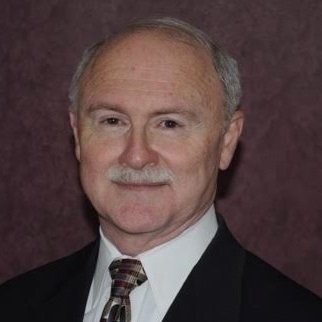
Doug Fullaway
Senior Living operational excellence has been the focus of Doug’s work since 2002. Doug Fullaway was the COO and then the CEO of Vigilan, a leading supplier of software for assisted living, memory care and independent living. Their customers included many of the leading companies like Emeritus, Brightview Senior Living and Capital Senior Living. Vigilan introduced subscription pricing to the senior living market and helped hundreds of senior living communities increase service revenues by $100/resident/month.
While working for RealPage after Vigilan was acquired Doug pushed for the use of call centers to increase tours by over 40% at Brookdale Senior Living and Holiday Retirement. He also developed a business simulation tool that is still used to teach senior living at leading universities. He has been part of the team that acquired poorly running communities and turned them around. He sits on the Board of the Center for Health Administration and Aging Services Excellence (CHAASE) at the University of Wisconsin Eau Claire and the Board for the Veteran’s Centers of Oregon. Senior Living is Doug’s passion.
Episode Show Notes
Podcast Show Notes


